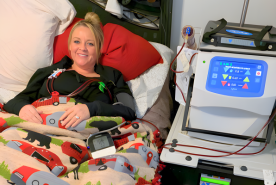
January 08, 2026
Patient Stories
Kidney Failure Hit Overnight—And in a Country Where He Didn’t Speak the Language

January 06, 2026
Patient Education
Your Mind Matters: Mental Health and Kidney Disease

December 19, 2025
Patient Stories
How a Golf Course Friendship Turned into a Life-Saving Kidney Donation

December 16, 2025
Patient Stories
A Daughter’s Kidney Journey and the Family Behind Her

December 15, 2025
Advocacy
What the New Medicare ACCESS Model Means for People Living With Kidney Disease

December 12, 2025
Advocacy
2025 Kidney Advocacy Wins: How NKF Helped Improved Care Nationwide

December 11, 2025
Advocacy
NKF Supports the Department of Health and Human Services’ New Kidney Transplant Transparency Policies

December 09, 2025
Patient Education
Celebrate the Holidays with Kidney-Friendly Recipes from Around the World
Learn More About Kidney Health
NKF Press Room
Access the latest press releases, media resources, and contact information from NKF.




